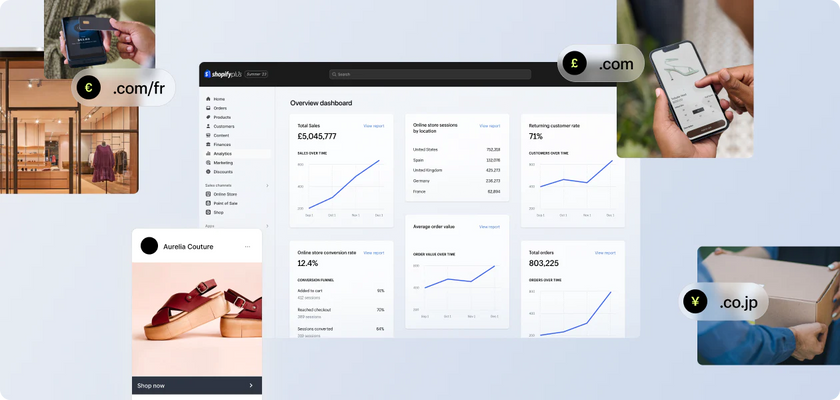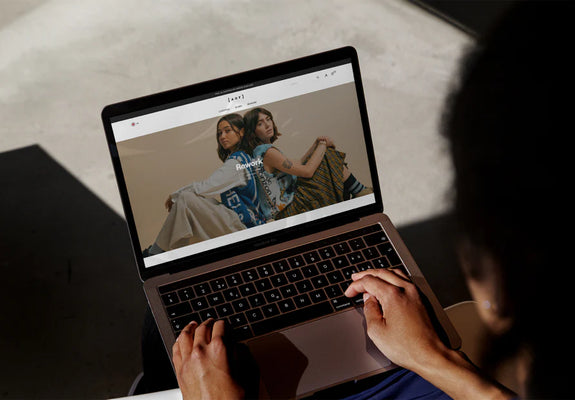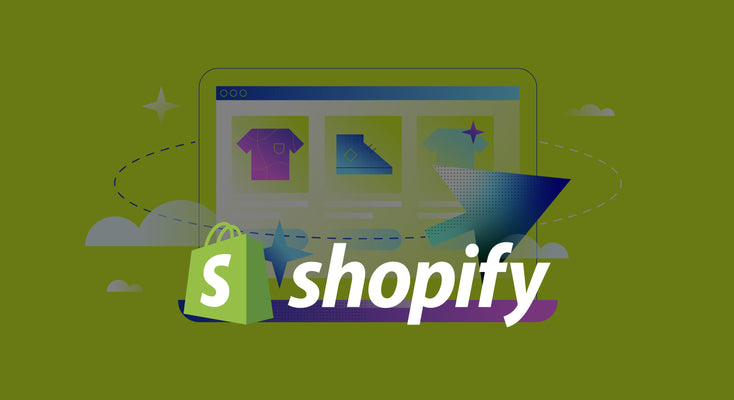Jun 11,2019 Juno Ecommerce Design
Colour psychology in branding

Colour is extremely important when it comes to branding. In fact, colour can increase brand recognition by up to 80%.
This isn’t exactly a shocking statistic – when you think of how synonymous Cadbury is with the colour purple, it seems pretty obvious. But it’s not always obvious what your brand’s colours are actually communicating to your customers.
Colour is much more than just aesthetic; it can influence how a brand is perceived by its audience, and even impact consumer behaviour and decision making. This is called ‘colour psychology’.
While it’s possible that the associations we make with certain colours in branding and marketing are actually due to cultural and personal experiences, that doesn’t lessen their impact on your brand’s image. So, when it comes to designing your brand, it’s important to take the psychology of different colours into consideration.
Take a look at the colours below and find out what your branding could be saying about you.
Red
Red is: Powerful. Passionate. Energetic. Exciting. Dangerous. Defiant. Aggressive.
Red is a powerful colour that can trigger contrasting emotions. While red is bold and passionate, it’s also dangerous, acting as a warning or deterrent. Of course, a little context goes a long way here; we don’t see the Coca Cola logo and feel fearful. It’s energetic, not aggressive.
When exposed to the colour red, our reactions actually speed up and intensify, creating a sense of urgency and reducing our analytical thinking. It’s for this reason that red works so successfully to promote a sale – along with its obvious aesthetic advantage of being a striking colour.
Red can also work to encourage your appetite, which is why it’s frequently used by fast food brands.
Suffering from reduced analytical capabilities and increased appetite? Turns out, we can blame the colour red for our failed diet attempts.
Orange
Orange is: Courageous. Confident. Warm. Innovative. Immature. Frivolous. Ignorant.
Orange conjures feelings of warmth and has strong associations with the sun, making it a great choice for easyJet’s logo and branding. And orange’s suitability to easyJet doesn’t stop there; orange is also the colour most associated with value. Time for a cheap holiday in the sun? Who you gonna call?
It’s not just easyJet who’ve cottoned on to orange’s association with value. Amazon, Home Depot and even Hooters have all harnessed the powers of orange.
In contrast to this, Hermes – one of the world’s most expensive brands – famously uses the colour orange for their branding and signature boxes. But this choice isn’t down to colour psychology – it’s historical. In Paris during World War II, orange was the only colour dye the brand could get their hands on, leading them to ditch their previous beige and mustard colour choices.
Other brands, such as Nickelodeon, have most likely opted for orange for its association with fun and frivolity. It’s bright, light and non-corporate. If this sounds like the brand characteristics you’d like to promote, you may want to incorporate orange into your styling.
Yellow
Yellow is: Youthful. Happy. Creative. Extroverted. Irrational. Anxious. Cowardly.
Arguably the most optimistic colour, yellow is happy, fun and youthful. It can even boost self-esteem when used correctly.
Despite being the most noticeable colour to the human eye, yellow can have practicality issues. Because only light tones of yellow are used – due to the mucky, unattractive quality of darker shades – it can get lost on white and other paler colours. To compensate, yellow is often paired with a darker colour such as red, black or navy blue.
Similarly to red, yellow has also been shown to increase the heart rate and appetite. These colours’ shared ability to stimulate the taste buds make them the most popular combination for fast food brands.
However, unlike red, yellow doesn’t cause impulsive thinking. In fact, it’s believed that the left side of our brains responds to yellow, stimulating deep thinking and perception – making it a bad choice for brands that rely on quick decision-making. So, next time you have an exam or an interview, avoid the colour red and try concentrating on something yellow before you start.
Green
Green is: Natural. Healthy. Fresh. Calming. Envious. Bland. Boring.
With its strong connection to nature, green is used in branding to represent health and freshness. Food companies use the colour to communicate that their product is good for you and full of natural ingredients (although whether it actually is or not is a separate issue).
Green is synonymous with being eco-friendly, making it a popular choice for brands that want to communicate a positive connection to the environment, planet and people. But be careful! Harnessing eco-friendly colours and imagery can backfire dramatically if your brand doesn’t reflect these qualities. Just ask BP.
Due to its supposed calming properties, green is also a popular choice for pharmaceutical companies. If you want to communicate a serene, soothing personality with your brand, green if the perfect colour.
Blue
Blue is: Trustworthy. Loyal. Dependable. Serene. Cold. Aloof. Unappetising.
Blue is the population’s most-loved colour, with more people selecting it as their favourite than any other. It’s interpreted as a sign of reliability and trustworthiness. For the most part, you’re unlikely to go wrong by incorporating a blue hue in your branding, but that’s not to say you should.
Aside from its association with trust, blue is thought to be a natural appetite suppressant. Whether that’s because there are no naturally blue foods or because blue is so infrequently used in food branding, it’s hard to say. But when it comes to appetising brands, it’s best to stay away from blue.
As long as you’re not branding a food product or service, blue is a safe option. Of course, safe isn’t always best. If blue is already popular in your industry, try pairing it with a secondary colour to set yourself apart.
Purple
Purple is: Luxurious. Spiritual. Sophisticated. Imaginative. Introverted. Decadent. Moody.
Purple is the colour of royalty, which gives it connotations of wealth, luxury and sophistication. This has been the case for centuries; due to the scarcity of the materials needed to create the dye, only very wealthy people could afford to be clothed in the opulent colour.
With its associations of luxury and decadence, it’s no surprise that purple is a popular choice for confectionary. After all, what’s more decadent than chocolate? But watch your step if you’re interested in Pantone 2685C – you might want to check the status of Cadbury’s trademark battle first.
As a blend of red and blue, purple is neither warm or cool, energetic or calm. Or, to be more accurate, it’s all of these things. As you alter the hue of purple you can adopt the properties of either red or blue, while also adding a touch of sophistication into the mix. Compare the Milka and Quality Street colours above; Milka’s blueish tint is calming, whereas Quality Street opts for a more vibrant, reddish shade.
Pink
Pink is: Imaginative. Nurturing. Passionate. Assertive. Eccentric. Impulsive. Flippant.
Pink is used in multiple industries, often by brands eager to break the mould. With one shade actually called ‘shocking pink’, it’s clear why.
Unsurprisingly, pink is the most popular colour used to portray femininity. Think Barbie, Victoria’s Secret and Cosmopolitan. But tread carefully with these connotations – you don’t want to be accused of lazy, sexist branding (remember the Labour Party’s pink bus?). Think more deeply than ‘this is for women so pink will work’, especially now you know so much more about colour psychology.
However, if you want to communicate a creative, non-conformist brand identity, pink could be worth considering.
Black
Black is: Sophisticated. Secure. Elegant. Authoritative. Oppressive. Menacing. Cold.
A favourite with both designer and high-street fashion brands, black is the very essence of sophistication. Along with blue, it’s also the colour least associated with cheapness. In branding, as in fashion, black is a classic, timeless option.
But because black is the absence of light, it can have ominous, menacing undertones in the wrong context. For this reason, industries like healthcare largely steer clear of black in favour of more calming colours.
Companies wanting to assert themselves as powerful, such as financial and news brands, are more likely to embrace the starkness of black over other colours. You can pair black with a second or third colour to maintain its power and sophistication while inserting a little energy into your branding.
Silver/Grey
Silver/Grey is: Timeless. Neutral. Reliable. Wealthy. Impersonal. Sterile. Cautious.
Grey is neutral; so neutral, in fact, that it’s the only colour here that doesn’t have any dominant psychological characteristics. But that’s not to say you can’t communicate a brand identity with grey or silver.
Silver – and grey by extension – has long been associated with futuristic projects, likely stemming from early science fiction. Both colours are therefore a go-to choice for brands wanting to portray a sense of modernity. This has worked well time and again for tech brands, such as Apple.
Luxury brands, particularly car manufacturers, have also favoured silver for its implied superiority. It suggests wealth and prestige, so if that’s how you want your brand to be perceived, silver is a good choice.
Colouring your brand’s personality
Regardless of the reasons, each colour is associated with particular characteristics, industries and feelings. If you’ve not already considered the impact of your chosen branding shades, now’s a good time to do so.
Consider your brand’s personality and what characteristics you want to communicate. How do you want people to feel when exposed to your brand? How do you want them to act? Now you know more about colour psychology, it should be easy to find the right hues to effectively influence this.


